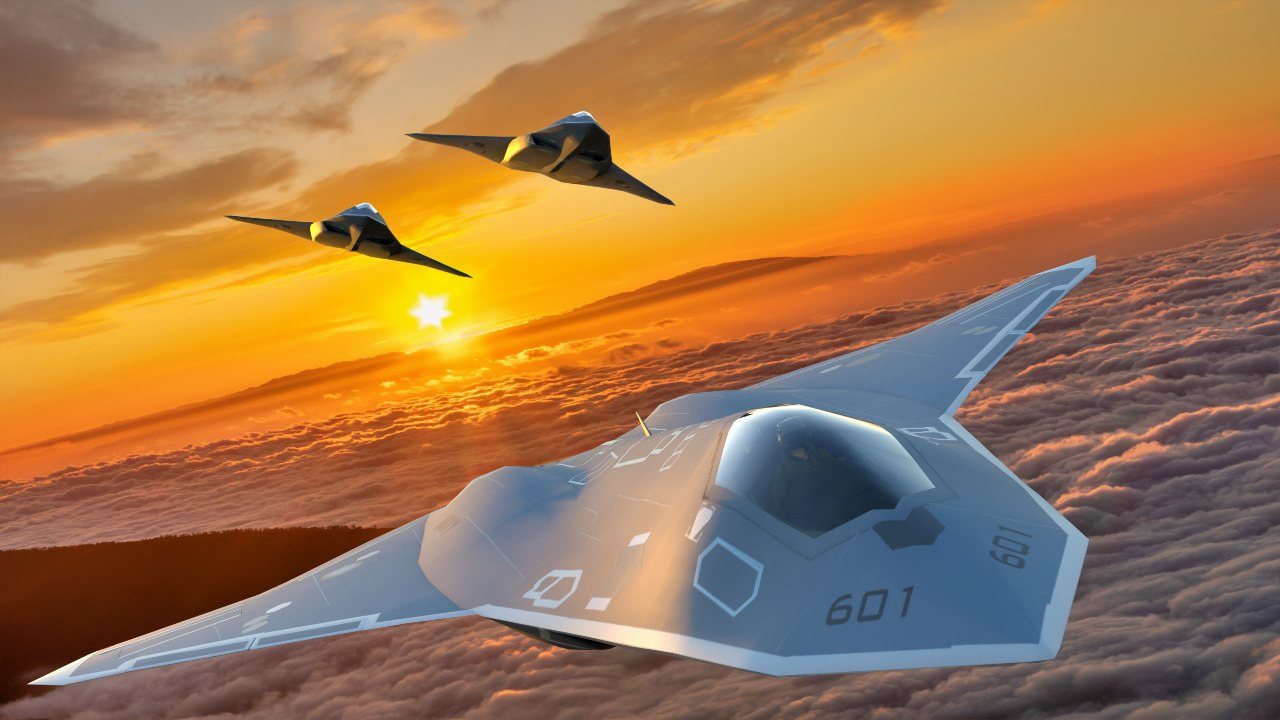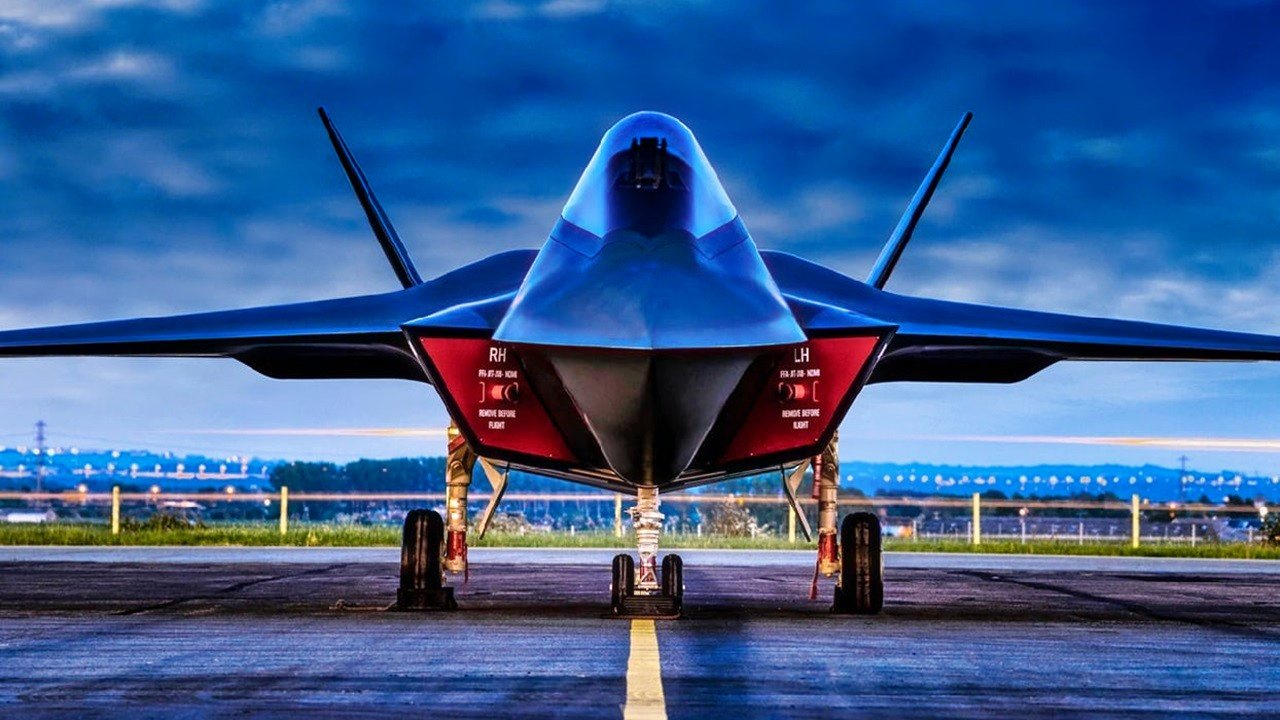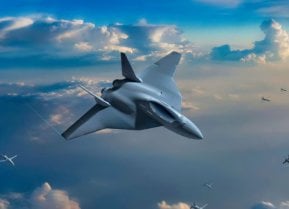NGAD vs. Tempest: Which 6th Generation Fighter Will Rule the Sky?
Details on the exact Tempest or NGAD aircraft have yet to be revealed, but the U.S. and UK efforts are gaining momentum. Here is what we know.
NGAD vs. Tempest: Who Wins? - The race is on to develop a sixth-generation fighter and more. There are now multiple competing programs, including one in the United States and another in the UK – with the latter including partners in Italy and Japan. The goal is very much the same, to develop an advanced aircraft, autonomous support systems, and a cloud-based network by the mid-2030s.
BAE Systems is leading the UK-led Global Combat Air Program, previously known as Tempest. In December, the three nations formally agreed to collaborate on the development of an advanced front-line fighter. Industry partners include Japan's Mitsubishi Heavy Industries, and Italy's Leonardo, as well as Rolls-Royce and MBDA UK.
Exactly which companies are involved in the U.S. Air Force's Next Generation Air Dominance (NGAD) is essentially a closely-guarded secret, although industry sources have suggested that Boeing and Lockheed Martin have been involved in the program, while Northrop Grumman announced last July that it won't compete to be the prime contractor on the NGAD fighter program.
Details on the exact aircraft have yet to be revealed, but both the U.S. and UK efforts are gaining momentum. Here is what we know.
The NGAD – A System of Systems
First conceptualized back in 2014 in a Defense Advanced Research Projects Agency (DARPA) Air Dominance Initiative study, the United States Air Force's NGAD program is about building more than a single aircraft. It has been frequently described as a system of systems that will include a six-generation fighter and autonomous support aircraft.
At November's POLITICO Defense Summit, U.S. Air Force Secretary Frank Kendall explained that the manned NGAD aircraft will control the uncrewed fighters escorting it. A variety of multi-mission drones, which have been dubbed Collaborative Combat Aircraft (CCA), could act as loyal wingmen, while all of the aircraft could be networked together enhancing the situational awareness for the manned and unmanned craft alike.
As previously reported by Maya Carlin, there are likely five different technologies that will be prioritized in the NGAD's fighter design including advanced weapons, stealth, digital design, propulsion, and thermal management. While sixth-generation technology has not been precisely defined, the features in the NGAD program are expected to greatly exceed the capabilities of fifth-generation counterparts.
We can further expect artificial intelligence (AI) and machine learning (ML) to be incorporated into the NGAD, acting as a co-pilot for the manned aircraft and allowing the unmanned aerial systems (UAS) to act independently. In other words, the drones won't require constant directions from the manned aircraft – they'll follow orders, of course, but still show initiative.

Given that Boeing has been developing the MG-28 Ghost Bat, a loyal wingman class stealth, multirole, uncrewed aerial vehicle, it seems likely that the aerospace firm is involved in the NGAD. Moreover, only Boeing and rival Lockheed Martin currently produce combat fighters, while Northrop Grumman has been focused on the B-21 Raider long-range strategic bomber, which was officially unveiled in December 2022.
Though the United States has sought international partners with its NGAD effort, it could still be described very much as a "team effort," as it involves several defense contractors. Last year, the Air Force announced that it awarded contracts worth a total value of $4.9 billion to five companies – General Electric, Raytheon Technologies' Pratt & Whitney, Boeing, Lockheed Martin, and Northrop Grumman – to develop prototypes of an adaptive engine for the next-generation fighter jet.
Each of the awards, worth up to $975 million, was for design, analysis, rig testing, prototype engine testing, and weapon system integration. The work is to be completed by July 2032.
Taking Aim at the Tempest
It was five years ago, at the Farnborough Air Show that the United Kingdom's Ministry of Defence announced that a new jet fighter program was in the works. It was then dubbed the Future Combat Air System (FCAS) – which certainly caused some confusion as the same name is employed by the rival French-German-Spanish effort also underway – but since that time it had come to be known as the "Tempest."
Japan joined the program last year, merging its F-X fighter program with Tempest. As of last month, the effort has been officially dubbed the Global Combat Air Programme (GCAP).
Much like the NGAD, the GCAP is more than a single aircraft.
However, where the Tempest fighter could be significantly different is that it is reportedly being designed to be flown remotely, or with a human in-cockpit pilot who is assisted by a virtual "avatar" co-pilot, which will be programmed to react to different scenarios. In addition, it will likely operate with a number of loyal wingmen drones – and could even have the ability to launch drone swarms against an adversary's aircraft.

The GCAP could further utilize a variety of "wearable cockpit" technologies, which would replace physical controls with augmented and virtual reality (AR/VR), including displays that are projected directly inside the visor of the pilot’s helmet. The multi-modal cockpit could further provide several different ways the aircrew will interact with the system, including voice, gesture, eye tracking, digital controls, or traditional HOTAS (Hands-On Throttle And Stick) controls.
The Italian-based Leonardo has disclosed that it is developing new radar technology for Tempest. Its Multi-Function Radio Frequency System (MRFS) is designed to collect and process unprecedented amounts of data, which has been described as being equivalent to "the internet traffic of a large city." MRFS is being designed to work beyond the boundaries of traditional radar, with digital technology providing the operator with a clear view of the battlespace and potential targets, "helping it win the information war."
It was announced this week that representatives from the three partner nations will meet in Tokyo later this month to sign a treaty next week to establish a joint organization and industry group for developing their planned advanced jet fighter
An inter-government body will oversee the industry group venture, and that group will distribute work to teams in different parts of the program, including the engine and avionics. The UK has already been selected as the headquarters for the program, given its lead with the Tempest.
Reuters in March reported that Japan and Britain would dominate GCAP, with about a 40 percent share of the work each. Rome dismissed that as "speculative," and it has also been announced that GCAP may also welcome other nations as junior partners, with Saudi Arabia among the contenders because it would bring money and a lucrative market to a project expected to cost tens of billions of dollars.
Author Experience and Expertise
Peter Suciu is a Michigan-based writer. He has contributed to more than four dozen magazines, newspapers, and websites with over 3,200 published pieces over a twenty-year career in journalism. He regularly writes about military hardware, firearms history, cybersecurity, politics, and international affairs. Peter is also a Contributing Writer for Forbes and Clearance Jobs. You can follow him on Twitter: @PeterSuciu.
Main image is sourced from Shutterstock. Intext images are Creative Commons.


